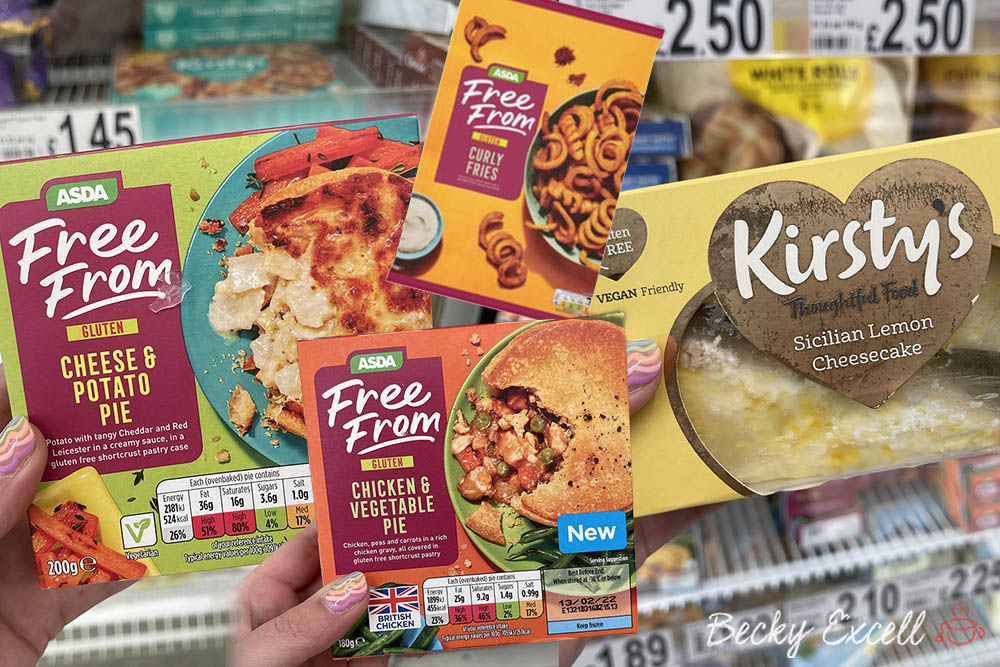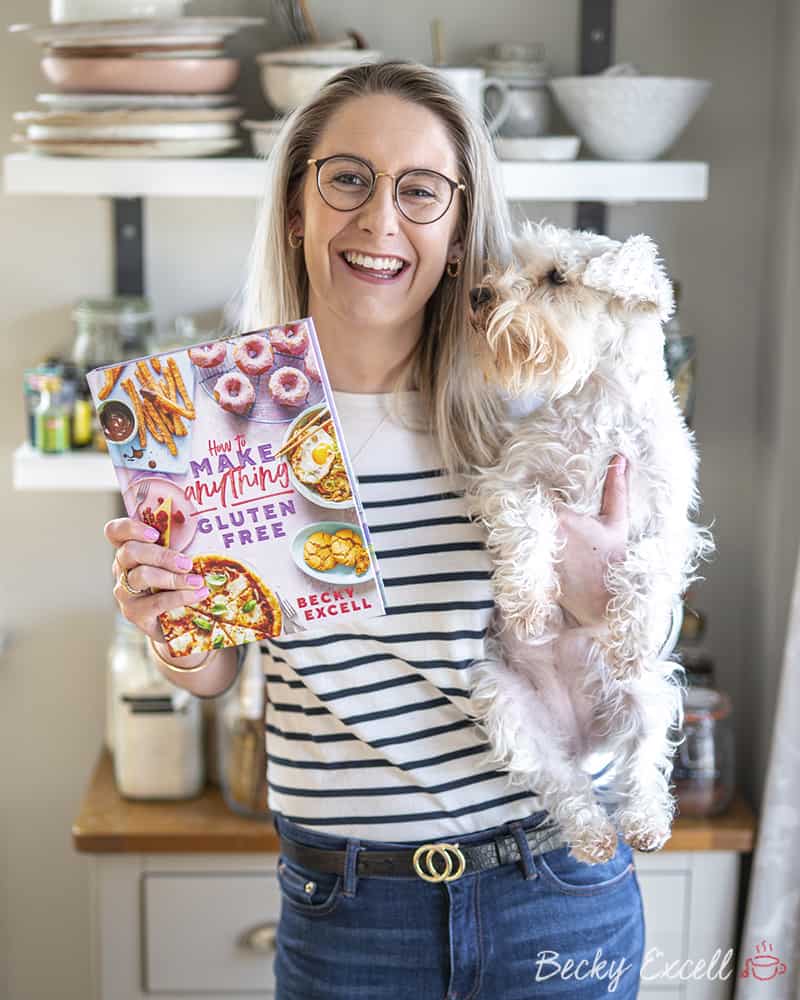When I started a gluten-free diet over a decade ago, I started with zero knowledge, zero cooking or baking skills and zero support.
So it may not surprise you to hear that, having finally found my feet in a gluten-free world, I’ve dedicated my blog to making sure that your gluten-free journey is plain sailing from the very beginning.


First steps
When I first started a gluten-free diet, my doctor didn’t tell me much more than “remove gluten from your diet”. From that point I was on my own.
So here’s everything that took lots of self-guided research to learn and understand (often the hard way!) that I wish I knew when I first started a gluten-free diet. Hopefully your journey goes more smoothly than mine did!



Gluten-free FAQ
I asked for everyone’s assistance in creating this post in my Facebook group and you guys kindly let me know all the questions you had about being gluten-free.
So here’s the answers to the most commonly asked questions that everyone put forward. Let me know in the group if there’s anything else you’d like answered!
What is Coeliac Disease? How does it differ from being gluten intolerant and other reasons for being gluten free?
According to the NHS, Coeliac disease is a condition where your immune system attacks your own tissues when you eat gluten. This damages your gut (small intestine) so you are unable to take in nutrients. It affects 1 in 100 people, but only 36% of people with the condition are diagnosed.
The symptoms commonly include diarrhoea, abdominal pain and bloating as well as fatigue, unintentional weight loss, infertility and more.
If you think you may have Coeliac disease, you can take an online assessment at Coeliac UK here.
According to Coeliac UK, a gluten intolerance (also known as non-coeliac gluten sensitivity) is when symptoms similar to coeliac disease are experienced, but it is not clear how the immune system might be involved because no antibodies are produced, and there does not appear to be damage to the gut lining.
What is 20ppm in relation to gluten-free food? What does this mean?
PPM stands for parts per million and is a scientific term used to measure small amounts of contaminants in a given mass ie. how much gluten contaminates a product.
According to Coeliac UK, only foods that contain 20 parts per million (ppm) or less can be labelled as ‘gluten free’. This is effectively the cut off point for a gluten-free product here in the UK – if it’s over 20ppm, then it cannot be considered gluten-free.
This isn’t something that you’ll ever see referenced on products, but it is something used online, for example, when Coeliac UK test products to verify if they’re gluten-free or not.
Do I have to avoid products that ‘may contain gluten’ and why?
Of course, being on a gluten-free diet means avoiding any products that contain gluten. However, some products without any gluten-containing ingredients have ‘may contain’ warnings for gluten, wheat, etc. and if you’ve been diagnosed with Coeliac disease, you’ll need to avoid these too.
These warnings mean that the product could have been contaminated with gluten at some point during the manufacturing process. Though there’s no gluten-containing ingredients present, the cross contamination may mean that the product is no longer gluten-free.
How do I make my kitchen safe to prepare and cook gluten-free food?
Carefully considering your cooking areas, methods and any equipment used is vital in preparing gluten-free food. That’s especially important if your kitchen or utensils have previously been used to prepare gluten-containing food.
So how can you minimise that risk? Here’s a few more common best practises:
- All utensils, pans and surfaces must be totally cleaned down if they have previously come into contact with gluten. You can happily use regular washing-up liquid and dishwashers to do this.
- Of course, gluten-free food must be cooked entirely separately from gluten-containing food.
- When deep-frying gluten-free food, do not reuse oil that has been previously used to cook gluten-containing food.
- Do not place gluten-free bread in a toaster that has been used for gluten-containing bread.
- Do not cut gluten-free bread on a board that has been used for gluten-containing bread, unless thoroughly cleaned.
- Ideally, you’d own utensils, pans, sieves and bread boards that are solely dedicated to cooking gluten-free food.
The moral of the story is that you can never be too careful!
I’ve been ‘glutened’ – what can I do to help alleviate my symptoms?
Being ‘glutened’ means accidentally eating gluten or falling victim to cross-contamination somehow. The reaction of being glutened varies from person to person, but symptoms can include vomiting, diarrhoea, bloating and general abdominal pain.
Whilst there’s nothing you can do immediately stop your symptoms, most people advocate a peppermint tea, paracetamol and a hot water bottle. Staying hydrated is especially important too.
What can I actually eat now? How do I find gluten-free products?
You can still eat a lot! All that’s needed is the know-how to identify what’s safe to eat and what isn’t.
Unfortunately, this isn’t something that you’re taught after being diagnosed even though it’s incredibly important to a lifetime on a gluten-free diet. But luckily, I’ve written down all you need to know here!
How can I tell if a product is gluten-free? Does it need to state that it’s gluten-free on the packaging?
Of course, the free from aisle in supermarkets is a great place to start, though do bear in mind that it’s a ‘free from’ aisle and not necessarily an entirely gluten-free aisle.
But there’s lots of naturally gluten-free products outside of the free from aisle too, so here’s how to identify them:
First of all, triple-check the ingredients list to ensure that they don’t have any gluten-containing ingredients or relevant ‘may contain’ or allergy warnings. Here’s a list of common sources of gluten that you’ll need to avoid:
- wheat
- barley
- rye
- oats
- spelt
Of course, remember that, even if a product doesn’t have any gluten-containing ingredients, it can still be cross-contaminated through manufacturing methods.
Even naturally gluten-free products like beansprouts or hazelnuts can sometimes have ‘may contain’ warnings that makes them unsuitable for most people who are gluten-free. I’ve even seen ‘may contain gluten’ warnings on salt and pepper, so it’s best to check everything.
Of course, things like fruit and fresh veg is fine though – unless modified or prepared in some way that makes it unsuitable (check the ingredients and allergy warnings on the packaging if there is any).
Will my weekly shop increase in price now?
It certainly doesn’t have to! There’s no doubt that gluten-free products are much more expensive than their regular counterparts.
However, beyond essentials like gluten-free bread, pasta and flour, there’s no reason that anything else should break the bank. Even when it comes to the essentials I just mentioned, shopping around can make a huge difference – for example, gluten-free flour in Asda is currently just 80p, whereas it averages for around £1.80 in other supermarkets.
Check out my Instagram or TikTok to see how I make 5 gluten-free dinners from a £25 shop. And don’t forget to look in my third book for my best money-saving tips.
Can I eat gluten-free wheat starch?
I think this is best explained by Coeliac UK here:
Gluten free wheat starch is a specially produced ingredient where the gluten has been removed to a trace level. It is used by some manufacturers to improve the quality and texture of gluten free products. It must always appear in the ingredients list if it has been used.
Foods containing wheat starch that are labelled gluten free are suitable for all people with coeliac disease. In the past, the Codex standard for labelling for gluten free foods was 200 parts per million, a level that people with coeliac disease could not always tolerate. The law on gluten free must contain no more than 20 ppm. This means that gluten free foods that contain wheat starch should no longer cause a problem for people with coeliac disease.
The only part that confuses others is that these products will indicate that they contain wheat because, although gluten-free, gluten-free wheat starch is derived from wheat.
This has to be indicated as, although gluten-free and safe for Coeliacs, it is still not safe for wheat allergy sufferers. So I hope that clears it up!
Are oats safe to eat? Why do I still react to gluten-free oats?
Unless specified as being gluten-free, regular oats are not safe to eat on a gluten-free diet. This is because, although they don’t actually contain gluten, they are always cross-contaminated due to manufacturing processes.
So be sure to only buy oats that are clearly labelled as being gluten-free from the free from aisle.
However, as oats contain a protein called avenin (which is very similar to gluten scientifically), a small amount of people can react to this in the way their body would react to gluten.
Am I able to eat products that contain barley malt extract?
Products that use barley malt extract need to be tested by Coeliac UK in order for them to verify whether it falls under the 20ppm limit.
Often, barley malt extract is used in such small quantities that some of these products would be safe for Coeliacs, however there’s no way of knowing without testing these products first. Coeliac UK is constantly in contact with manufacturers and encouraging them to get their products tested.
So whilst it is possible for a product that contains barley malt extract to still be considered gluten-free, it must have been tested first for it to be labelled as gluten-free first. Unless the product clearly states it’s gluten-free, you should avoid these products.
